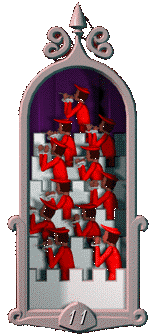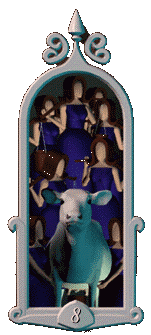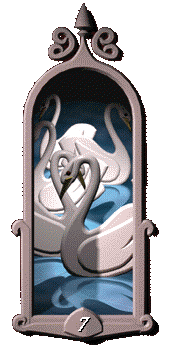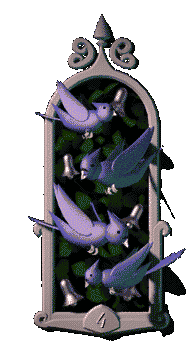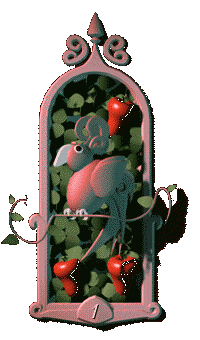 When I was growing up back in Ohio, the village of Milford had their own way of disposing of old Christmas trees. They would be collected and taken to some field at the edge of town, stacked in a big pile, and "Twelfth Night" would be celebrated with the lighting of a bonfire dubbed the "yule log."
When I was growing up back in Ohio, the village of Milford had their own way of disposing of old Christmas trees. They would be collected and taken to some field at the edge of town, stacked in a big pile, and "Twelfth Night" would be celebrated with the lighting of a bonfire dubbed the "yule log."This is remarkable when you consider that Milford is a town first settled by (and more than two centuries later, is still more or less dominated by) Methodists and not "Catlickers." (Here we note that Protestants in the northern states did not celebrate Christmas until well into the 19th century. Indeed, it was outlawed by the northern colonies in the early years of European settlement. The southern states, on the other hand ...) Of course, my parents -- may God rest their souls -- didn't go for that sort of ribaldry, so I never actually saw it, but I would always read about it that week in the local rag known as The Milford Advertiser.
These days, I imagine people would have a hard time penciling it in between trips to soccer practice and PTA meetings. In fact, since leaving the Buckeye State to seek my fortune elsewhere, I learned that the town has yielded to other priorities, as in this little gem I read a few years ago, from the county's Office of Environmental Quality:
“Many recycled trees are sent through a wood chipper and are used as mulch.”
They have got to be kidding. That kills the holiday magic right there. Then again, why celebrate the glory of the season, when you can spend the rest of the year spreading it on your lawn and walking all over it?
Meanwhile, here at Chez Alexandre, we will celebrate Epiphany on the traditional day all along. Tomorrow the lights that are traditionally left on all during Christmastide, will finally be shut off in the evening and taken down. They will be put back in storage along with the decorations, waiting for the season to return.
Last of all, the dying tree is sent to its final resting place -- in the years that we actually have a live tree, which we didn't this year ... but that's another story.
 Joy, health, love and peace
Joy, health, love and peaceBe all here in this place
By your leave we will sing
Concerning our King.
Our King is well dressed
In silks of the best
In ribbons so rare
No King can compare.
We have traveled many miles
Over hedges and stiles
In search of our King
Unto you we bring.
We have powder and shot
To conquer the lot
We have cannon and ball
To conquer them all.
Old Christmas
is past
And we bid
you adieu
Great joy
to the new.
(H/T to Steeleye Span.)


